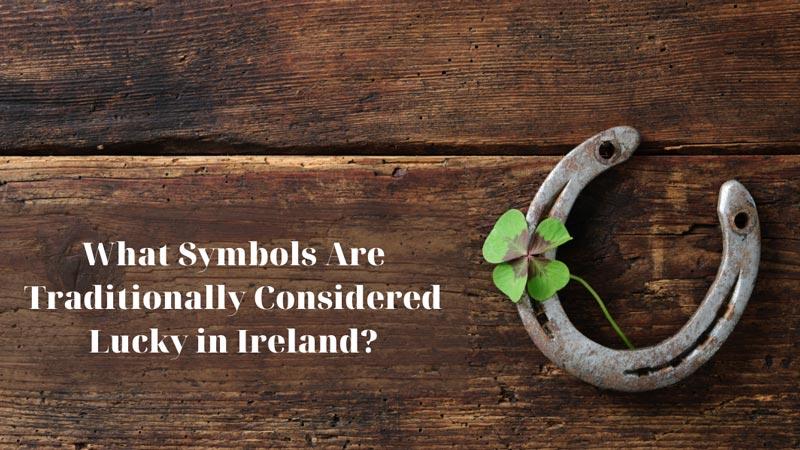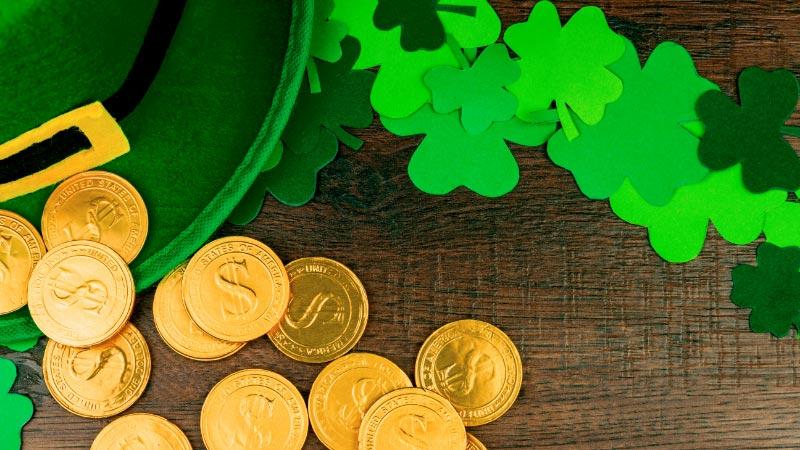Luck of the Irish is a phrase that is often expressed when people find themselves lucky enough to land some good fortune. Surprisingly, this belief was not drawn from Ireland but California in the nineteenth century. The phrase was coined in the age of the gold rush when most of the prospectors who ended up lucky were of Irish descent.
Even though this phrase is not from Ireland, the region is well-known for its belief in lucky charms. These beliefs can be traced as far back as 500BC and were popularised in the Iron Age by Celtics living in Western Europe and Britain. During the time, numerous myths, folk tales, and legends were told to give a historical background to symbols and trinkets that were said to be sources of good luck.
The belief that some Irish symbols possess incredible power to bring good fortune is popular to date. Some of these symbols have gone as far as to break into the entertainment scene. Here is a walk through history to discover some of these symbols and why they are considered to be suitable luck trinkets.
Four-Leaf Clover
The four-leaf clover is an incredibly rare finding with the probability to occur among popular three-leaf clovers is one in 10,000. The depiction of this item as one of luck traces back to the age of the ancient druids who lived in the British Isles. Several times a year, different clans would gather to settle disputes between them, which often involved offering sacrifices. These rituals ended with the attendees dispersing to try and find a four-leaf clover.
It was believed that finding one granted the power to see witches and evil spirits and better avoid them. In the medieval age, this belief evolved into the ability to see mischievous fairies and stay away from their shenanigans. The four-leaf clover is said to also wield the power of great fortune, far beyond that of a three-leaf clover. Each leaf is supposed to represent one element of prosperity, which are:
- Fame
- Wealth
- A faithful lover
- Glorious health
The fame of the four-leaf clover has seen it depicted in several religious beliefs as well, the most popular one being Christianity. The Bible states that Eve took a four-leaf clover from the Garden of Eden as a reminder of the happiness that she had found there. Therefore, those who have one are believed to hold a little bit of paradise. During the height of the world wars, young British men could be spotted wearing the clovers on their jackets since it was believed that it spared them from being recruited in the army.
Today, some people believe that putting a four-leaf clover in their shoe after finding one brings good fortune. This is especially popular with single Irish women since it is supposed to improve their chances of finding true love. Another alternative is pinning it on the front door, and the first man to walk through it will end up falling in love with her. The luck of the four-leaf clover is also exploited in casino slot games, including:
- Charms and Clovers
- Lucky Clover
- Kiss Me Clover
- Clover Tales
- Irish Gold
- Full of Luck
- Lucky Star
- Star gems
- Super Lucky Charms
Shamrock
Just like the four-leaf clover, the three-leaf clover is a stable association of Irish luck culture and is often used as a reverence for the arrival of St. Patrick’s Day. Before the prevalence of Christianity in the British Isles, the Celts believed that the most valuable treasures in the world came in groups of three or its multiples. For instance, the three ages of humankind, three moon phases, and three significant dominions of our world, which are sky, sea, and earth. Therefore, the shamrock was viewed as a sign of Mother Nature’s regenerative power, and fortune would come to those that had it.
The popularity of the shamrock as a lucky symbol can be traced as far back as 400AD when the Celts started to lean more towards Christianity and leaving their pagan ways behind. St. Patrick was at the forefront of introducing this new religion. Instead of abandoning all previous beliefs that were upheld in Ireland, he adopted some of them to preach the gospel.
Since the four-leaf clover was so rare to find, St. Patrick opted to add some speciality to the regular three-leaf one. The saint depicted three-leaf clovers as a symbol of the Holy Trinity with each leaf representing the Father, Son, and Holy Spirit. This principle was widely used in masses, and numerous images of the saint today show him holding a shamrock. Since the four-leaf clover looked like a cross, it was considered that it depicted the Holy Trinity with the added grace of God. Also, it was made extra special by the fact that it looked like a cross.
Over time, the shamrock has been adopted as an emblem by militias that rivaled government ideologues. Today, it can be spotted in the Royal Coat of Arms in the United Kingdom as it stands alongside the thistle of Scotland and rose of England.
Horseshoe
The horseshoe is among the most widespread good luck charms in Ireland that have paved its way with similar symbolism in cultures all around the world. Horses are some of the most dependable creatures, as seen throughout history, thanks to their incredible strength and durability. Therefore, most people kept their used shoes as a charm to attract fertility, fortune, and good luck. The superstition was also tied to fairies, which were sometimes believed to cause mischief with their magic. Since the mythical creatures cannot stand iron, which horseshoes were made out of, it was thought that they would ward off the troublesome voodoo the fairies caused.
As Christianity took hold in Ireland around the tenth century, the legend of the horseshoe luck also got a twist to fit a religious narrative. This time, it was linked to the saint Dunstan, who was a blacksmith before going on to become the Archbishop of Canterbury. The legend states that the saint was once requested by the devil to shoe his horse. Dunstan pretended not to know him and took on the task. However, instead of nailing the iron shoe to the horse, the saint nailed it to Lucifer’s foot, which caused him excruciating pain. The saint agreed to undo the deed only of the devil promised not to take his evil to any household with a horseshoe hanging on its door. It has long been debated how the horseshoe should be attached to keep the devil out. Some say it should be with the ends pointing down while others say it should face up.
Celtic Cross
Even though the cross is currently seen as a symbol of Christian faith, Celtic beliefs indicate that it predated the religion by thousands of years. The symbol is a combination of the traditional Christian cross with a Celtic circle in the middle. One theory stated that it represents the four elements of earth, air, water, and fire and was used by the Celts as an ideal reflection and representation of their ambitions and hopes. In some cases, the cross was drawn with even arms, which was assumed to denote morning, noon, evening and midnight. Numerous Celtic gravestones that predate Christianity have been found with these crosses on them, which supports the theory.
Some theories believe that the Saints Patrick and Declan created the Celtic Cross in a bid to convert the druids from pagans to Christians. Since the Irish believed in the sun and saw it as a life-giving source, the saints combined it with the Christian cross. This was done to show that both beliefs can coexist and thrive.
Today, the most significant representation of the Celtic Cross in Ireland is the Emery Celtic Cross that is 100 meters long. The cross was created by Liam Emery from two species of pine trees more than a decade ago. The scenery has grown into a beauty that serves as one of the major tourist attractions in Ireland.
Brigid’s Cross
The Brigid’s Cross also predates the Christian cross and is linked to the life-giving goddess Brigid of the Tuatha de Danaan found in Celtic mythology. The cross is usually made of rushes or straw, and it is used in the feast of Imbolc as a mark of the commencement of spring. When Christianity came to the British Isles, the Brigid of the Tuatha de Danaan became St. Brigid of Kildare. Brigid’s Cross is sometimes drawn as the Carolingian cross, which is a more elaborate version with four uniform arms representing balance, unity, and God’s eternity.
The Green Man
The Green Man was depicted in traditional Ireland as the head of a man with green foliage all around. The image is believed to have inspired leprechauns, which are tiny little creatures always clad in green and also seen as good luck symbols. The Green Man was used to represent the arrival of spring, which was marked by a lot of lush vegetation.
Verdict
The Celtics were significant in shaping Irish culture, which influences the region to date as well as the world. These symbols can be found on buildings, jewellery, and artwork, as people hope to use their charm to impact their lives positively.


